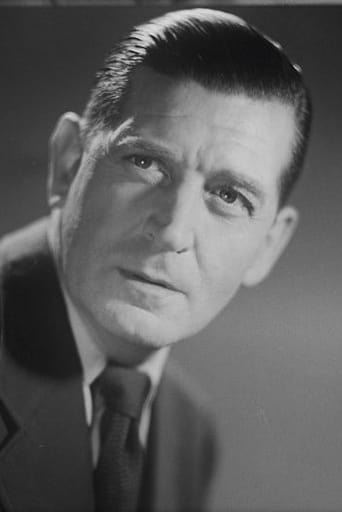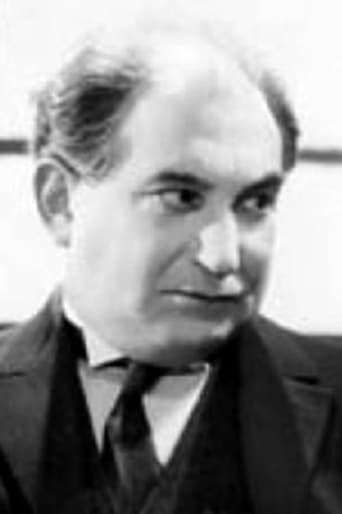calvinnme
When a man awakens from his nightly sleep and leaves his quarters atop the Eiffel Tower, he discovers all of Paris is empty. After wandering for a bit, he finds that the people haven't vanished, they are all frozen in place like statues. He joins up with a merry band of people that land in an airplane, and they have fun in the empty city. Eventually, though, things start to turn ugly, and they need to get to the bottom of what happened to the city.This is an early version of films like I Am Legend, in the sense that one of the chief joys is seeing a normally bustling city like Paris devoid of movement. Clair managed several impressive shots of empty streets and parks, although the effect is broken occasionally by a moving boat or train in the distance. At only 35 minutes, there isn't a lot of time for things like plot development or deep characterization. The main point here is silly fun. The version I watched had the title cards in French only, but the story is clear enough from the on screen action that this doesn't prove much of a problem. This was listed in 101 Best Sci-Fi Films book.
MartinHafer
This is a super-inventive silent film from the same director (René Clair) who later made the highly original "À nous la liberté!". Oddly, despite being a terrific film and me being a huge fan of silents, I have never heard about it. It certainly deserves to be better remembered.The film begins with a man coming home from his job at the top of the Eiffel Tower. He is amazed to see that everyone has stopped dead in their tracks and are immobile. For a while he thinks he's the only living and moving person, but soon an airplane lands with some others just like himself--mobile and alert. For days the small group cavorts, though after a while tempers flair--after all, they are hour guys and only one woman! Just before they can kill each other, they receive a wireless communication from another woman in Paris, so they run to her address. According to the new lady, her crazy father is an inventor and made a "crase ray" that has literally stopped everyone in their tracks. The guy in the tower and people in the airplane were not effected because the ray had a limited height. The new girl was unaffected because the scientist made the house crase ray-proof! While there is more to this story, I need to point out for a silent it was well written, acted and directed and has aged very well as a result. This fantasy/sci-fi film is so unique and charming, I encourage all lovers of the silents to look for it--you won't be sorry.
whpratt1
This silent film took me by complete surprise and I could hardly believe this film was so advanced for this production in 1925. Henri Rollan, plays the role as a watchman on the top level of the Eiffel Tower in Paris, France and comes down into the city and finds people all sleeping and in suspended motion standing like frozen statues. It seems a certain scientist had discovered an invisible ray which could not reach people in airplanes or Henri who worked at the top of the Eiffel Tower. If you want to see how France looked in Paris in 1925, you will enjoy all the old cars and the 1925 fashions for men and women. By the way, this film is only 21 minutes long and went along as a second feature on a much longer film I purchased. Great film to view and enjoy.
Alice Liddel
The most loveable of all silent masterpieces. It took years for Surrealism to finally mature in the cinema as a powerful artistic presence, as in 'Vertigo', 'Le Samourai' or the late films of Cocteau (of whom much of the imagery of frozen citizens in this is reminiscent). The official Surrealist films of the 1920s, with the exception of Bunuel's, were usually childish trickery, rather than a valid way of looking at, or undermining the world. 'Paris Qui Dort' is different, delicate, beautiful, elegant and funny, it turns reality inside out, making reality a dream, and dream a reality (see the wonderful sequence where the bewildered hero, having roamed through an enchanted Paris, can only find the 'real' city in his head).It is such a lovely idea, the whole of Paris enchanted by sleep, except for those in the air. The hero, due to bad luck, has to live on top of the Eiffel Tower, already cut off from a social context, as with the 'Wizard of Oz'-like band of acquaintances he strikes up - an aviator, an English detective, a notorious criminal, an independent woman (it IS the 1920s!), a blustering tycoon, a mad scientist and his daughter. These are the kind of people who would see life as unreal anyway. The question is: is the city of Paris, with its social order of work, crime and play, dreaming of these outsiders, who play out its desires of independence, wealth, power, freedom; or is it the other way round?For the Surrealists, there was no need to heighten life - it was strange enough as it was. By placing the picture-postcard Paris in a fantastical context; by emphasising the hidden geometry of the city and its buildings; by showing a city, built by people for people, without people, Clair suggests a sublimely suspended dream place, like Tir na nOg, where people never grow old.Tellingly, the old human foibles - greed, lust, jealousy, ennui etc. - threaten to destroy the freedom of the new social order even as it subverts the old one based on those foibles. But Clair subverts this world anyway by revealing the power of film, as the Professor's power over life and movement is Clair's power over his cinematic apparatus, capturing a Paris that sleeps, that never has to die, or admit debilitating transience, by capturing it on his camera. It's only a dream, just as the cinema is a dream before we go back out into the rain, relationships, bills, health. Sometimes you wish time would stop, that the inevitability of progress, and its immovable corollary, decline, could be averted. Clair is the most beloved of the Surrealists, because he knows knockabouts and chases are far more eloquent than portentous, 'meaningful' images.




